The hand-lettering on this fire insurance map of Cardigan, Prince Edward Island from 1910 is beautiful:
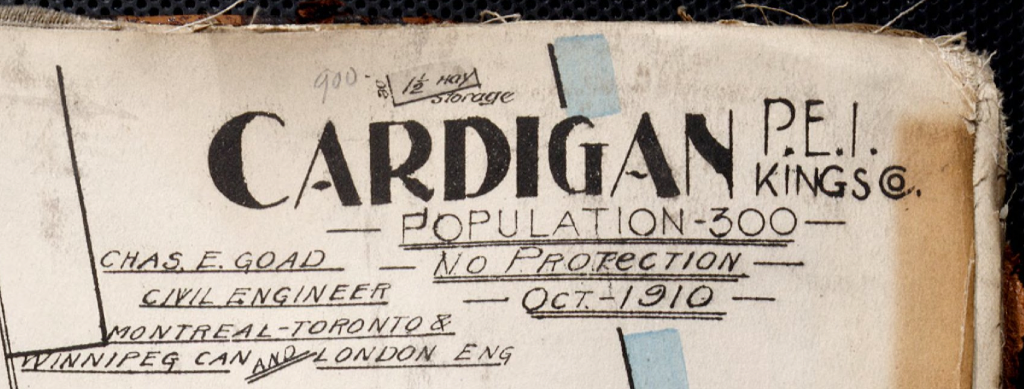
When the PEI Home and School Federation was invited to provide feedback on the then-draft School Change Policy to the English Language School Board, among the recommendations submitted was one related to open data:
Provision of open digital data to aid external organizations in contributing to the process.
While the Board did integrate several of the Federation’s recommendations into the final policy, this open data recommendation was not one of them.
Now that the school change process is well-underway, the absence of this open data is compromising quality of the consultation process, most prominently in the provision of draft school attendance zone boundaries.
Many of the draft recommendations concern modifications to these boundaries, and they are, understandably, of great interest to families who will be affected.
And yet these boundaries are being communicated to the public using cartographically-dreadful low-resolution PDF maps that look like this:
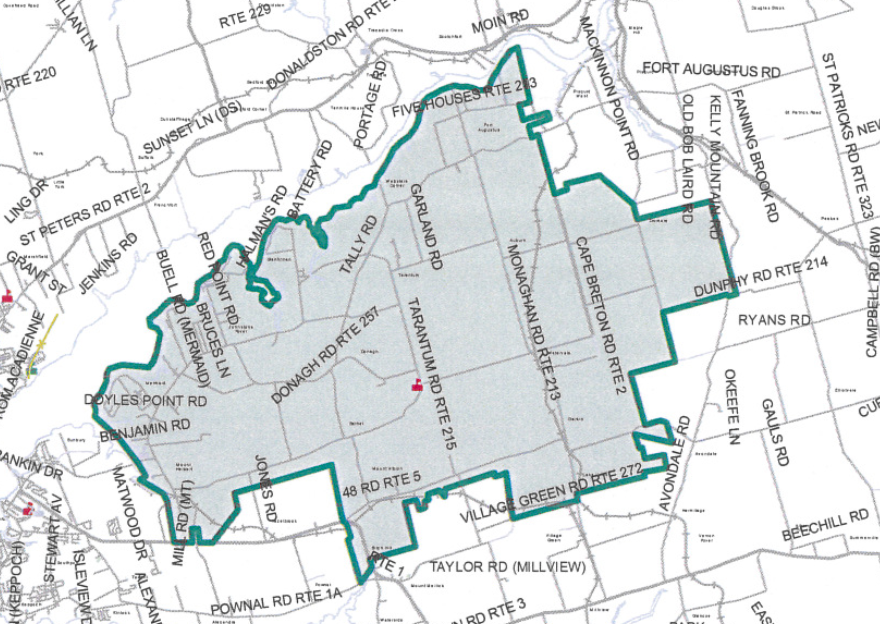
This is a clear example of why open trumps closed: there is tremendous depth of cartographic experience on Prince Edward Island, and if open map data was made available the community would be able to create maps of far higher quality and utility than these.
I spent a good part of 2015 telling public servants that “PDF are where data goes to die” and there is no more clear an illustration of this.
If you’re engaged in the school review process, and want better maps to aid better decision making, I encourage you to ask for them.
Update: Bob Andrews from Public Schools Branch got back to me very quickly in response to an email where I asked him for GIS data related to the boundaries. We had a good conversation about the possibilities and limitations of providing open GIS data. I learned that the PDF maps in the reports are created by exporting PDF files from Baragar Systems’ GeoSchool application, so the poor quality of the maps is not a reflection of local cartographic capabilities but rather a reflection of that application’s limitations.
I followed up with a call to Baragar to see if it was possible to export GIS data from GeoSchool and was told that although this isn’t built into the GeoSchool application, it’s possible for Baragar to export ESRI Shapefiles for an additional fee; they would not agree to do this, however, without an agreement that the resulting data files not be shared with the public, which makes the notion of doing this with open data in mind moot.
This is an example, thus, not of reticence by the public service to release open data, but rather a situation where a commercial third party enforces a restrictive license on data created using its software that specifically prevents the data from being released in the open. And thus, for the longer term, it’s a matter of reevaluating our software choices to those that favour open data.
There’s too much choice in the toothpaste aisle, but I’ve got a system: in my Evernote I keep a photo of my go-to brand, Colgate Sensitive Pro-Relief.
Toothpaste is toothpaste is toothpaste as far as I’m concerned, and I buy this brand not because of its multiple adjectives, but rather because I really like the cap.
Old-style screw-on caps fly away too easily, and require the tube to be stored horizontally; newer-style hinged snap-shut caps allow vertical storage, but get clogged too easily.
The cap on the Colgate Sensitive Pro-Relief is rather ingenious. On first use the tube gets “cracked open” by using the top of the cap as a sort of wrench; from then on the substantial hard-to-lose cap screws on with a very satisfying click; it never gets clogged, and it allows the tube to stand vertically.
I don’t know why this isn’t the standard on all toothpastes.
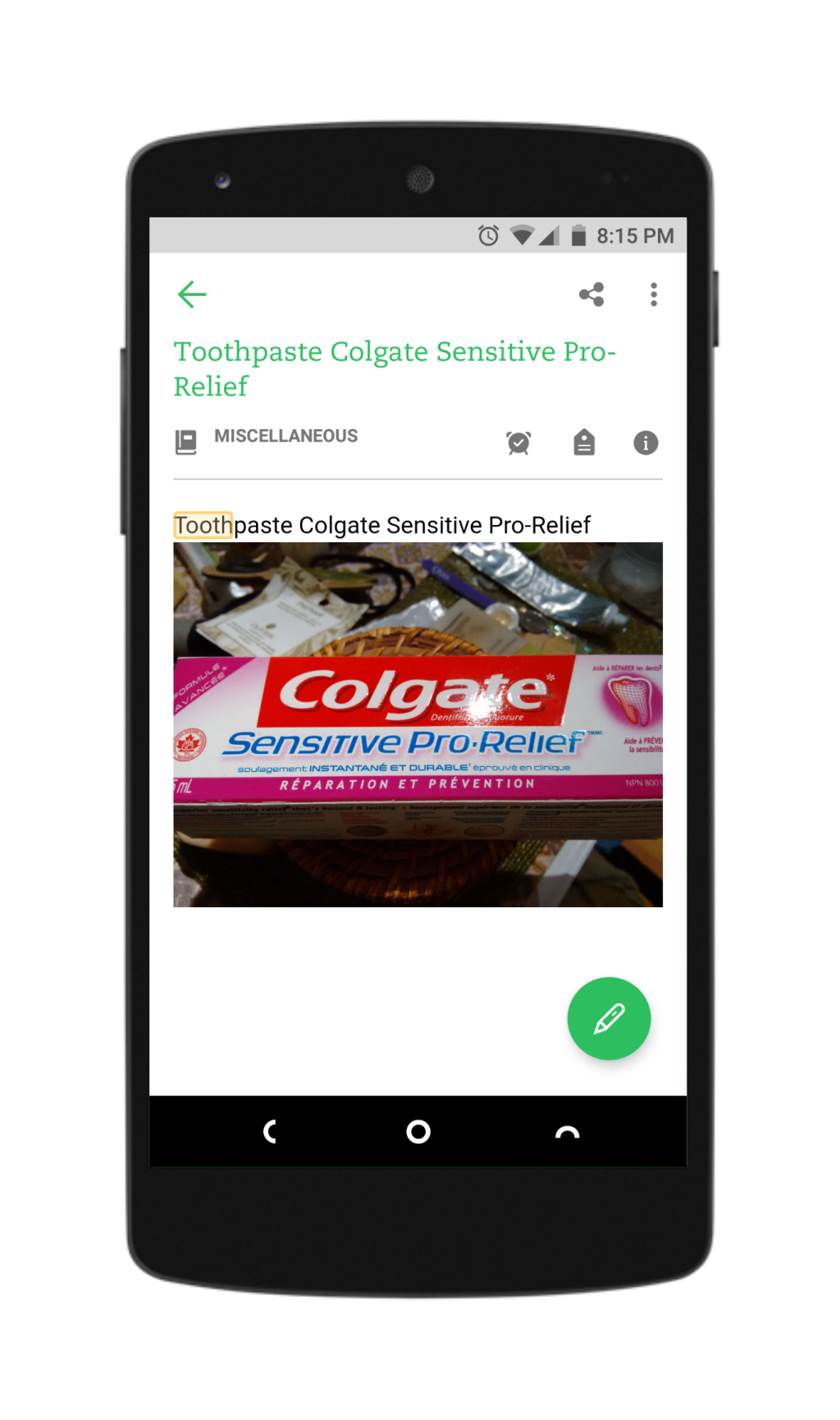
I stitched together a time-lapse of this morning’s sunrise over the headquarters of The Old Farmer’s Almanac in Dublin, NH, using images from the Almanac.com webcam. The sequence runs from 5:00 a.m. to just before 9:00 a.m.
I have been an enthusiastic patron of Prince Edward Island’s Public Library Service for more than 20 years, but I didn’t learn until this weekend that it had what’s called a “floating collection.”
On Saturday, Oliver and I traveled up to Summerside to see the new Inspire Learning Centre, and, because the collection is so well-displayed, I quickly found some books I wanted to borrow:

Except I wasn’t sure this was allowed: could I, a Charlottetowner, borrow Summerside books and, what’s more, could I return then to Charlottetown?
“Yes!”, the enthusiastic librarian an l at the checkout desk told me.
And—here’s the floating bit—the books I borrow and return to Charlottetown will stay in Charlottetown.
I’d always imagined that each library branch had its own collection and that there was a complicated scheme for returning them “home” if they left. But there isn’t: the books float from branch to branch organically.
This raises two interesting possibilities:
First, if one could get anonymized data on the flow of books from branch to branch, maps of “interest flow” could be drawn. That would be cool.
And, because we all have the power, through our borrowing and returning, to change books’ locations, it’s possible to influence that same interest flow. If I want to increase chainsaw literacy in Cornwall, or tip the discussion of early English drama in Tignish, I simply need to borrow-and-transfer the right books.
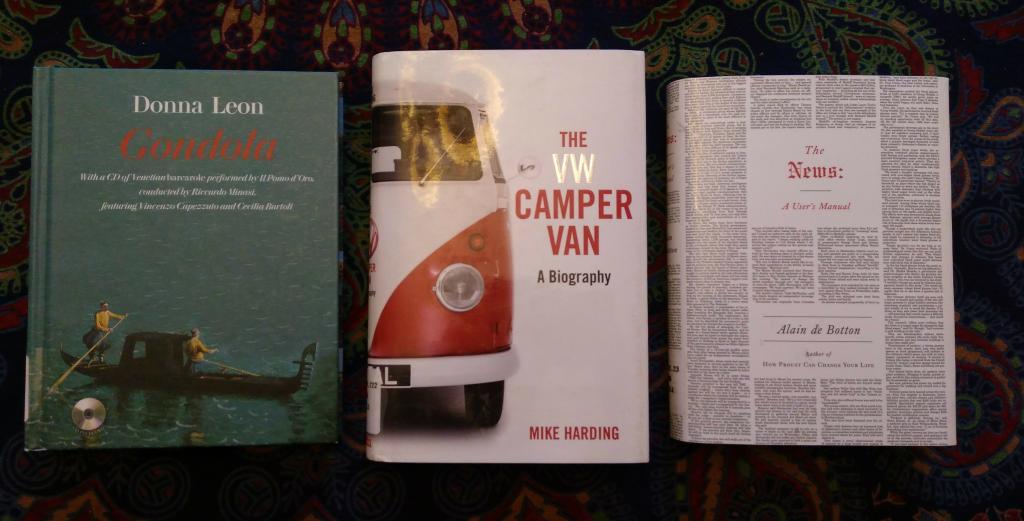
One of the things you get used to when you’re driving around a 17 year old car on the rough wintertime streets on Charlottetown is that parts of the car fall off from time to time.
Most of the time–thank goodness–these parts aren’t vital: they’re bits of plastic or metal shielding designed to protect some vital part of the car, but that the car can otherwise operate perfect well without.
Last week there was ample evidence, just from listening to the rattle-and-scrape of the car on the driveway at home, that something new was falling off the bottom of the car. I drove around for a week with hopes that it would rattle and scrape free, but it didn’t. And so this morning, after I dropped [[Oliver]] off a school, I drove round to Mufflecentre to see if they could help.
While there are other muffler shops in Charlottetown, Mufflercentre is well known as the elite special forces of the exhaust system world. It’s where you go when you need something unusual done. Or something welded. Anything that’s not the typical “insert muffler A into slot B.”
Here’s how things proceeded:
Me: I’ve got a 2000 Jetta out there with things hanging off the bottom. Nothings wrong with the exhaust system, but it’s making a lot of noise.
Mufflercentre: Pull it around to bay number three and we’ll take a look.
I pulled the car around to bay number three, and got waved in to drive over top of the pit. There was a 50% chance, to my mind, that I would drive right into the pit, but I did not.
Me: There’s a bunch of stuff hanging off the bottom; I wonder if you could pull it off or tack it up.
Mechanic: Okay, let’s take a look.
The mechanic walked down the steps into the pit, pulled one bit of aluminum shielding off and bolted another into place. It took him about 3 minutes.
Mechanic: Okay, you’re set. No charge for that. Have a nice day.
And off I went. I’d left the house at 9:15 a.m. I was back at home, Oliver delivered and noise muffled, by 10:00 a.m.
Needless to say, I recommend Mufflecentre for all your muffling needs.
For all the computers and learning pods and post-library-library rhetoric, the most comforting and revolutionary aspect of the new Inspire Learning Centre in Summerside is the generous width of the aisles between the bookshelves. It makes browsing the claustrophobic aisles in Charlottetown feel like being trapped in an antediluvian book prison.

I’ve written a lot about MacAusland’s Woollen Mill in this space over the years. It is one of my favourite places, and their wool blankets are one of my favourite things. If you’re in Greater Bloomfield, do yourself a favour and drop in, take a look around at their fascinating machinery, and then buy yourself a blanket.
We have a large fleet of MacAusland’s blankets at our house: one for every bed, one for the car, a couple for the living room.
Today I extended MacAusland’s reach into the office environment: you’ll recall that yesterday I reported on the introduction of the office chaise. I reasoned that, for the [[Reinventorium]] chaise to be an effective office-napping vehicle, I needed an office blanket. And so on the way to work today I stopped in at Northern Watters up the street; they’re an enthusiastic MacAusland’s dealer, and have blankets in stock in many colours and sizes. I picked out a brilliant orange one in the “throw” size (52” x 76”) and it now graces the office.
It’s wonderful.
So if you can’t make it all the way out to Bloomfield, you can always pickup a blanket here and there when you’re on Victoria Row.
Blogging’s exhausting; time for a nap.
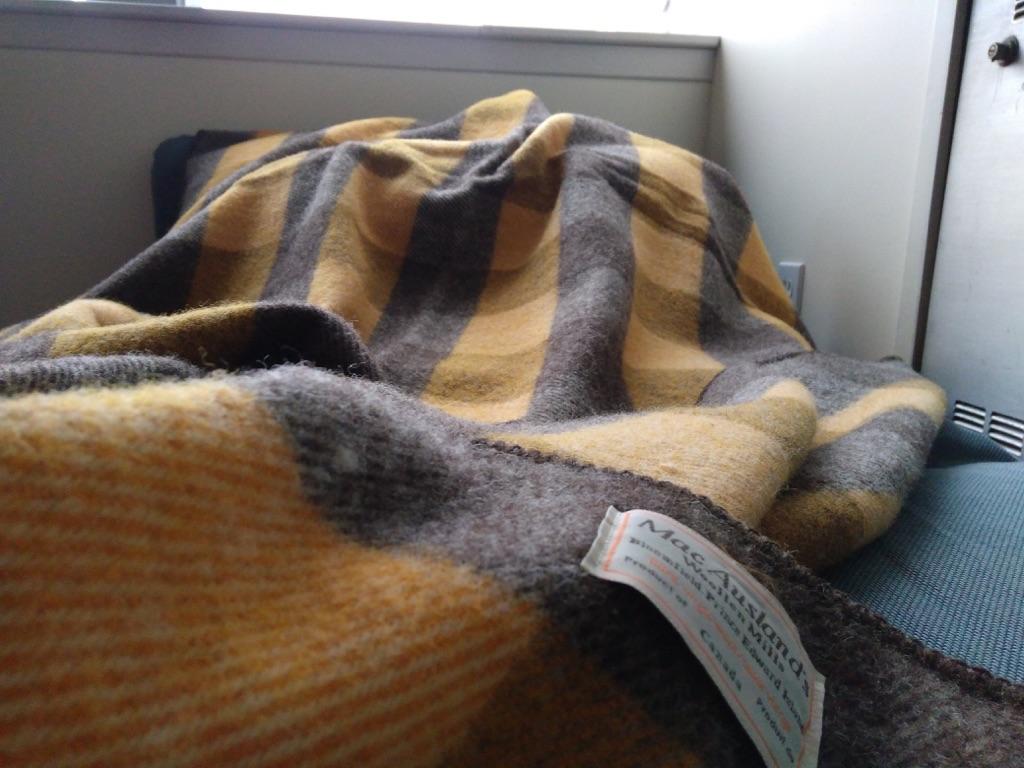
Ever since I moved into the [[Reinventorium]] five years ago, and especially since [[Johnny]] decamped to California two years ago, I’ve been looking to outfit the office with some sort of casual seating upon which I could read, reflect, nap, or otherwise do non-typing things. This is partly because I’ve got non-typing things to do, and partly because if all I do is typing things all day, I’m liable to sit in the same position for 8 hours, with only a few breaks. And that, ergonomics people tell me, is a bad idea.
The stumbling block had always been the casual seating itself.
The Island is not known for its furniture aesthetic, and the local showrooms are more prone to stock Norman Rockwell-inspired punishing couches than they are sleek urban crash-divans. There is Cottage Industry, a laudable exception, but as they’re a tiny space, unless they have something in stock you need to purchase on spec, and I’m not the kind of person who can purchase as something as intimate as an office-creche sight unseen.
Enter IKEA, conveniently located just 5 minutes from my parents house in Burlington, where we were visiting for the holidays two weeks ago. During a quiet moment [[Oliver]] and I paid a visit, and in the upstairs showroom I found the Söderhamn line, a mix-and-match erector set of chair and sofa parts that can be stitched together in innumerable combinations. They happened to have a turquoise-upholstered chaise variant set up in the showroom, and it proved to be almost exactly what I’d always been looking for.
So when we returned to home soil last week, I overcame my inherited Depression-era “spending money on ones own comfort is wrong” defenses and ordered one on January 4, 2017; the chaise itself was $450.00 and delivery was $149.00; with tax it all came to $688.85:
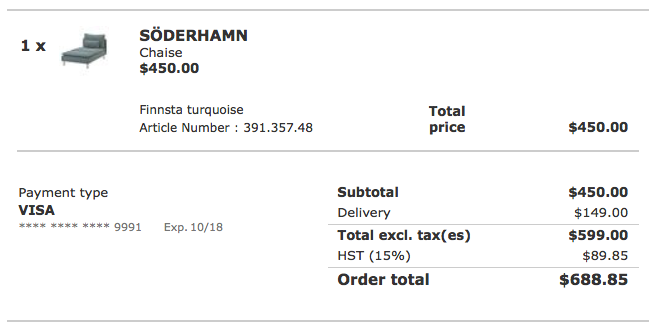
Six days later, today, January 10, 2017, a big box (with the chaise) and a little box (with the upholstery) arrived here at the [[Reinventorium]]. This was something of a surprise, as my original receipt said “Your final delivery date may differ and will be communicated by email/phone once the order has shipped.” and I received no such communication. But that’s not surprising, as IKEA’s web store feels like it was fashioned out of the remnants of the Apollo space program computer platform; it works, but only in a way that surprises you.
The box was well-packed, using vacuum-sealing to keep all the puffy bits compact. Inside I found everything I needed to assemble the Söderhamn, guided by the notoriously hard-to-parse-unless-you’ve-already-done-it pictorial instructions, filled with illustrations like this:
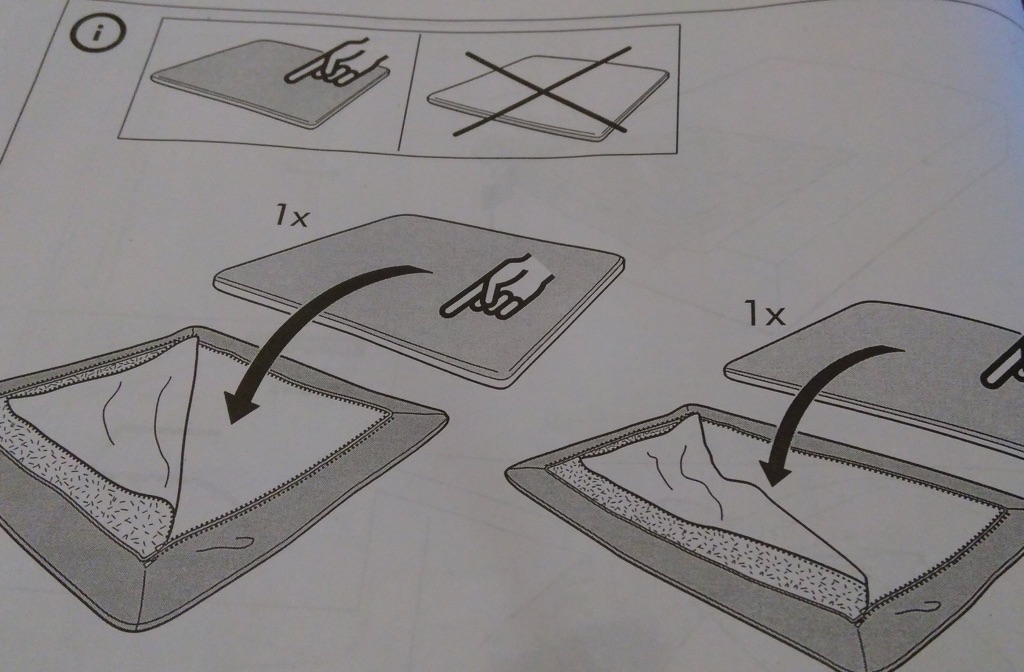
But I made my way. And, of course, it all seemed very ingenious once it was assembled and I understood the underlying theory. I found a corner of the office near the window–Johnny’s former workspace, as it happens–and here’s the result:
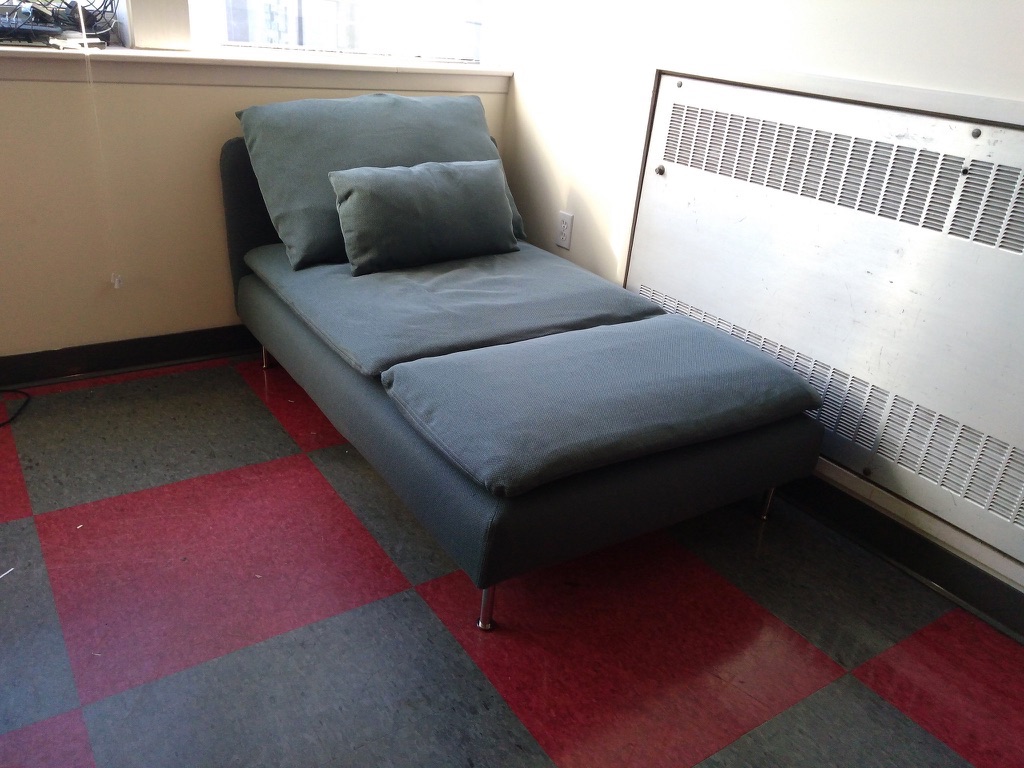
I updated the SketchUp model of the office to match:
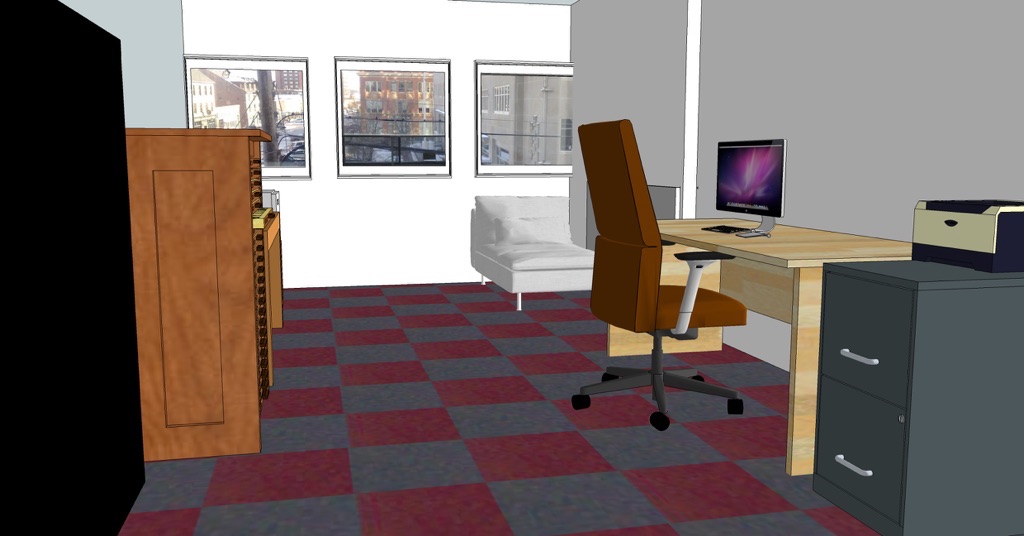
The IKEA Söderhamn line, I presume, is named after the Swedish community of the same name. This happens to be only about 100 km from the home of the other Golding Jobber № 8 letterpress that I know of.
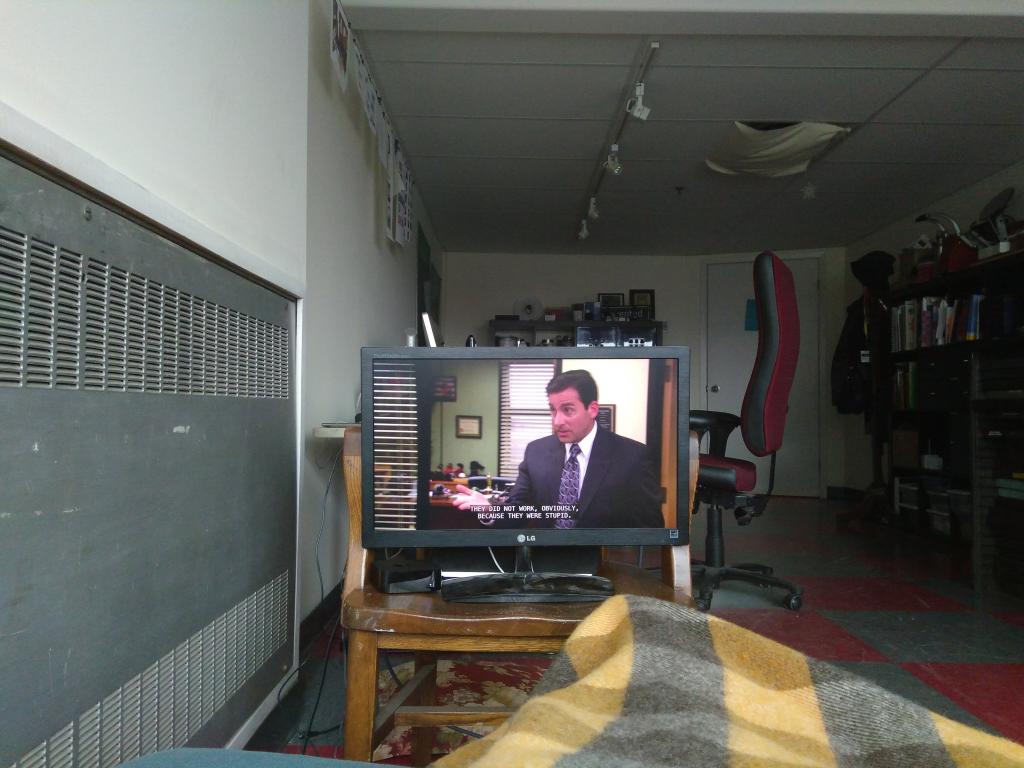
 I am
I am